“Coralporosis”: The fate of cold-water corals under ocean acidification
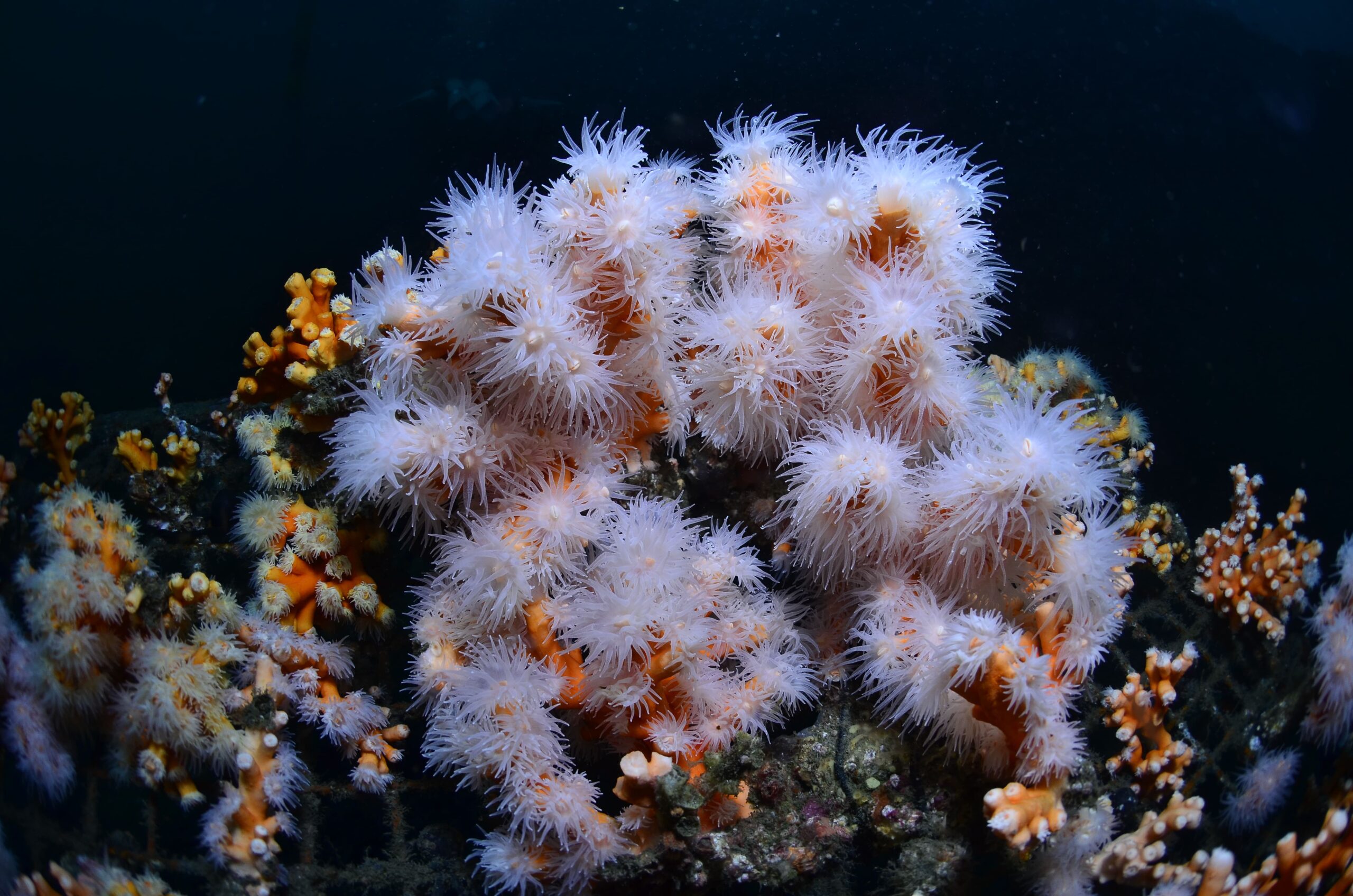
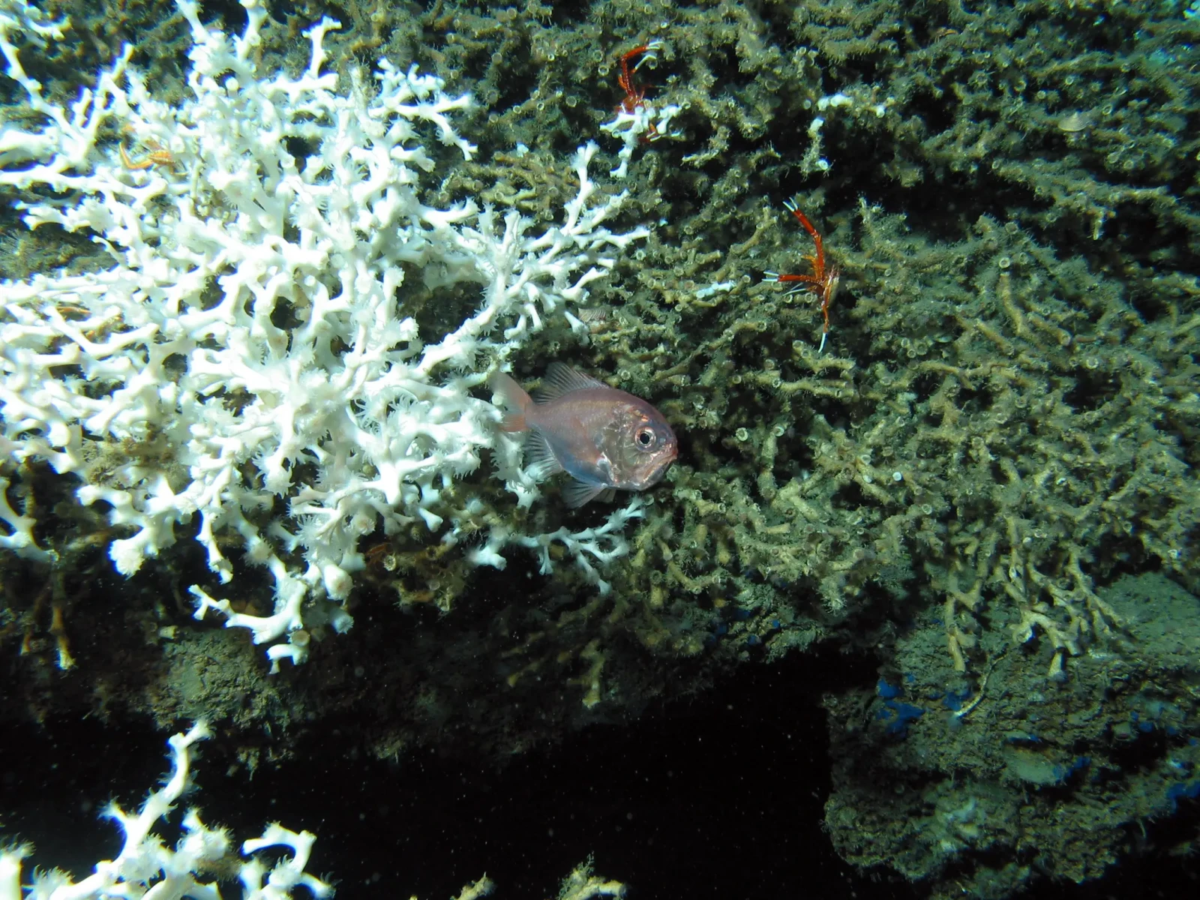 A fish swims around a colony of Lophelia pertusa coral on a cold-water reef.
A fish swims around a colony of Lophelia pertusa coral on a cold-water reef.
Coral reefs are found throughout the tropic, temperate and polar oceans, from the warm and sunlit shallows to the dark depths of deep sea trenches. As global warming continues to exacerbate ocean acidification, coral reefs across the globe are struggling under a plethora of related pressures. Often overlooked and sidelined in favour of tropical reefs, cold-water reefs face equal, if more pressing, threats from acidification with ecosystem-wide consequences.
Cold water coral reefs
Across the oceans, cold water coral reefs can be found carpeting the seabed and rearing up in looming carbonate mounds, deep below the surface, the majority existing at between 200-1500m depth. These ecosystems may appear similar to their shallow-tropical counterparts at first glance – biogenic structures harbouring a vast array of marine life – the functions and structure of these reefs work in vastly different ways. Whilst coral reefs found in tropical shallow seas rely heavily on algal symbiosis for energy, cold-water corals exist far below the surface where sunlight is watery and weak, or cannot penetrate at all. Cold water corals are largely carnivorous, slow-growing beings, forming sprawling ecosystems which host rich biodiversity and perform essential functions (Henry & Roberts, 2017) such as carbon and nutrient cycling, nursery and feeding grounds for thousands of species, and buffering of ocean currents. The structure of the reef, unlike that of shallow tropical reefs, is largely made up of dead coral skeleton with only a thin ‘skin’ of live coral over the top. This dead framework, consisting of aragonite, forms the structure of the ecosystem and is essential for many of the associated species the reefs support.
Ocean acidification at depth
Aragonite (a form of calcium carbonate) is susceptible to dissolution in acidic conditions, garnering concern from scientists as ocean acidification continues to increase. The bioavailability of aragonite in the water column determines the growth rate of many marine organisms such as skeleton-building corals. Both temperature and pressure affect this bioavailability; the high pressure and low temperatures found at depth lead to a reduction in aragonite stability, enabling it to dissolve more readily, and therefore reducing its availability for corals. At a certain depth, a threshold is reached known as the Aragonite Saturation Horizon (ASH), below which aragonite is no longer bioavailable, making it difficult for organisms to assimilate their skeletons and shells. As ocean acidification intensifies, the ASH is gradually advancing to shallower depths, reducing the area of ocean in which marine organisms can maintain calcium-carbonate based structures and presenting a major threat to these species.
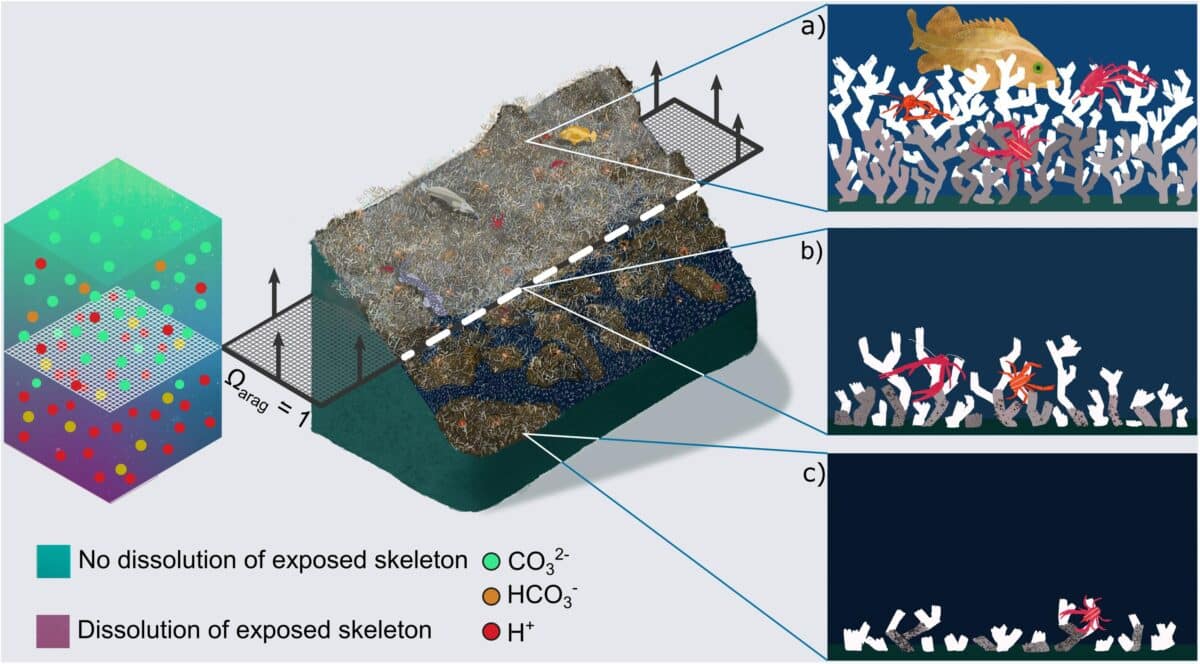 Figure 1: A visual representation of the predicted movement of the ASH and its effects on cold-water coral ecosystems (Hennige et al., 2020).
Figure 1: A visual representation of the predicted movement of the ASH and its effects on cold-water coral ecosystems (Hennige et al., 2020).
The case of Mingulay in the Atlantic Ocean
The Mingulay reef complex is the largest cold-water coral reef ecosystem known, lying off the west coast of Scotland in the north Atlantic ocean. Only discovered in 2003, little research has been done on the ecosystem processes, species, and environmental conditions here. However as technological surveillance techniques advance, exploring deep ecosystems such as Mingulay is becoming more accessible.
Researchers from the University of Edinburgh recently investigated the effect of acidification on cold water coral species using both field (in-situ) and laboratory studies (Hennige et al.,2020), to determine the porosity level of coral skeletons that would lead to structural collapse of existing coral ecosystems. Presence of the cold-water coral species Lophelia pertusa was recorded via ROV surveys conducted in the California Bight and the Mingulay reef complex. Both live and dead samples of L. pertusa were concurrently collected, and preserved in ethanol until experimental testing took place, as well as hydrographic data which was used to calculate aragonite saturation states. The samples were subjected to different temperature and pressure scenarios under lab conditions to assess the effect of various combinations emulating predicted ocean acidification conditions up until the year 2100, on the porosity of the coral skeleton. Studying porosity of coral skeletons provides insight into the structural resilience of the reef; highly porous coral skeletons are more susceptible to bioerosion and physical damage, and can indicate stress. Understanding the link between porosity and the rate of carbon sequestration – the formation of aragonite – in corals is crucial in predicting the future impacts of ocean acidification.
The results showed that the dead coral skeleton (the framework of the reef) experiences elevated levels of ‘coralporosis’, a phenomenon whereby the skeleton shows thinning and weakening due to a decrease in surrounding water pH (ocean acidification). Live coral was less severely impacted, however this does not mean cold-water reefs are not at urgent risk of degradation; the proportion of dead coral skeleton can be as high as 85% of total coldwater reef material, hence losing this will result in extreme habitat loss and the crumbling of entire ecosystems, leaving only a thin layer of live coral. This dead section of the reef provides the structural complexity and 3D nature of the ecosystem which makes it so valuable to the associated biodiversity – dissolution of this structure will remove essential habitat and result in huge biodiversity loss. This makes cold water reefs particularly vulnerable to the effects of global warming and ocean acidification, underscoring the need for climate change mitigation and stringent regulation of carbon dioxide emissions.
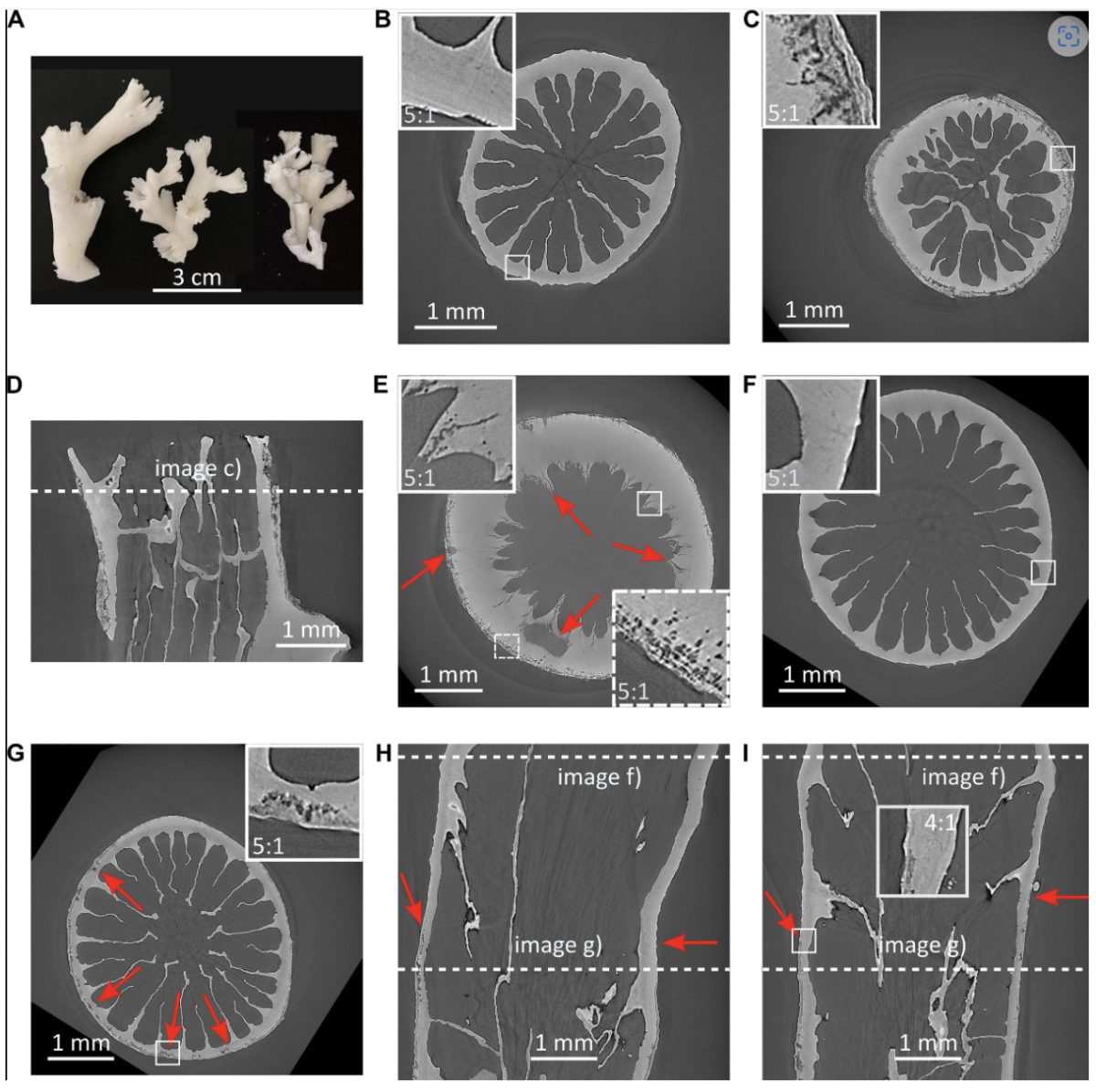 Figure 2: Photographic evidence of the increase in porosity and dissolution of L.pertusa specimens from the Mingulay reef complex and California Bight (Hennige et al., 2020)
Figure 2: Photographic evidence of the increase in porosity and dissolution of L.pertusa specimens from the Mingulay reef complex and California Bight (Hennige et al., 2020)
The study has hence projected that by the end of the current century, significant loss of cold water reefs will likely have occurred. As the ASH rises, coral ecosystems which were once in aragonite-stable zones may be exposed to corrosive conditions which prevent their growth and inhibit ecosystem functions. This shift is a threat to cold water coral reefs across the globe, though particularly those in the North East Atlantic such as the Mingulay reef complex, due to the dominance of L. pertusa coral here.
To combat this phenomenon and prevent loss of these wondrous and magical ecosystems which are so vital to so many forms of life, it is crucial that a larger global effort to reduce carbon dioxide emissions and sequester the excess carbon that has already been released. There has been a significant effort in recent years to increase ocean-based carbon storage approaches, known as ‘blue carbon’, such as seagrass restoration and kelp forest conservation, however tackling the issue at its core cannot be avoided – this is where the biggest changes are needed.
References
Hennige, S.J., Wolfram, U., Wickes, L., Murray, F., Roberts, J.M., Kamenos, N.A., Schofield, S., Groetsch, A., Spiesz, E.M., Aubin-Tam, M.-E. and Etnoyer, P.J. (2020). Crumbling Reefs and Cold-Water Coral Habitat Loss in a Future Ocean: Evidence of ‘Coralporosis’ as an Indicator of Habitat Integrity. Frontiers in Marine Science, 7. doi:https://doi.org/10.3389/fmars.2020.00668.
Henry, L.-A. and Roberts, J.M. (2017). Global Biodiversity in Cold-Water Coral Reef Ecosystems. Marine Animal Forests, pp.235–256. doi:https://doi.org/10.1007/978-3-319-21012-4_6.
Ces articles pourraient vous intéresser

Do clouds support us in coral protection?
Mystery in the Pacific: who saved coral reefs at the Society Islands? Could the presence of clouds in the sky improve the health of coral…
28 November 2023An unexpected benefit for some Pacific corals of El Niño?
Over the past 30 years, marine heat waves have become increasingly frequent, intense and long, and it’s highly likely that this trend will increase with…
10 August 2023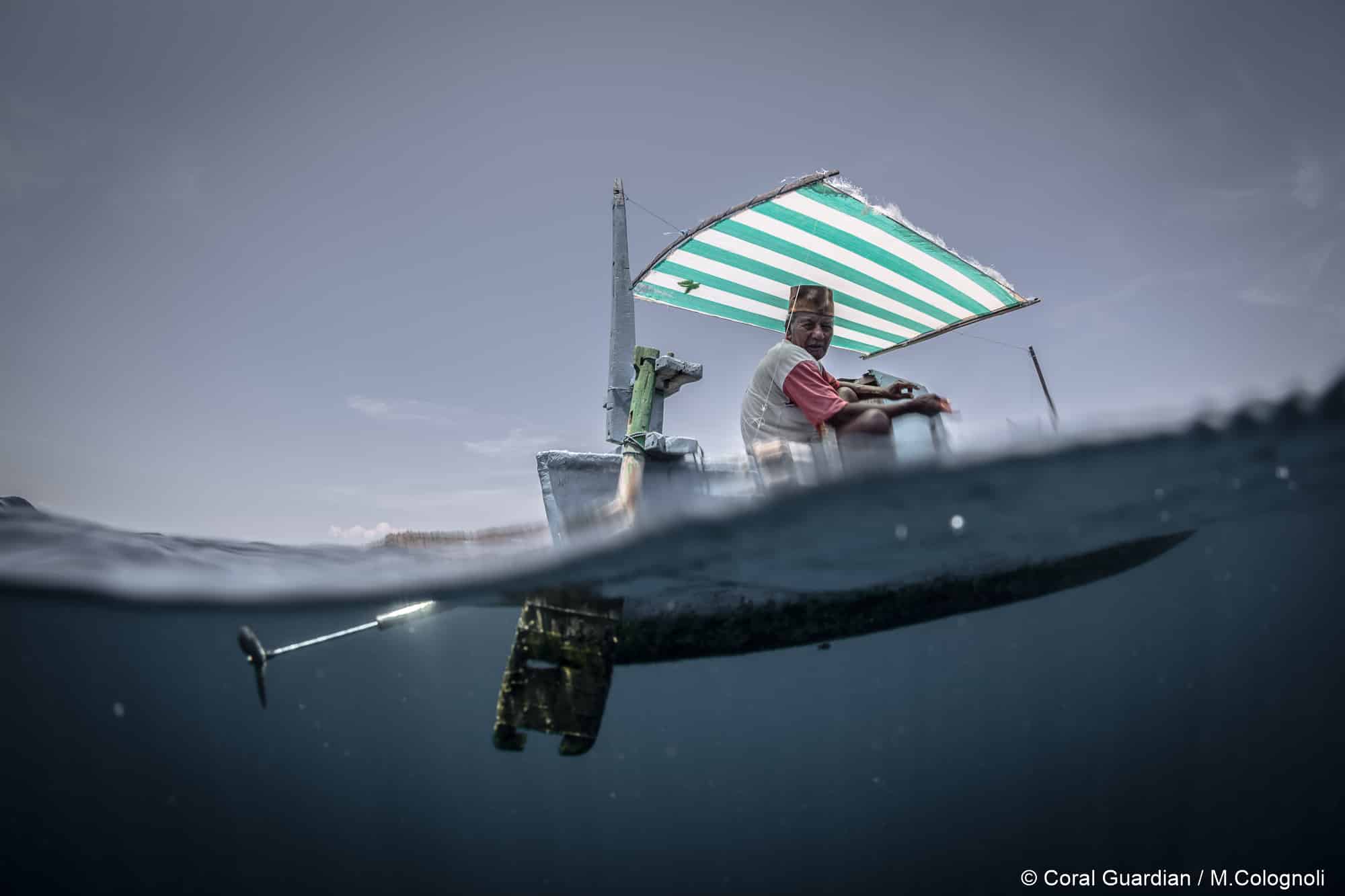
Climate-impacted reefs may continue to supply vital micronutrients through fisheries
Acknowledgements to James Robinson. Coral reefs rank among the most productive and diverse ecosystems on Earth – including more than 700 coral species and…
30 March 2022
